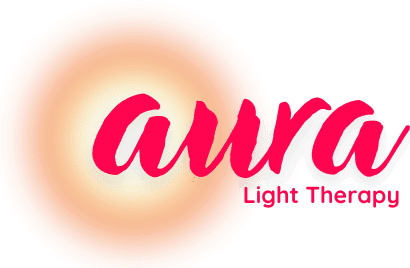
Safety & Efficacy of RLT

Red Light Therapy (RLT) — also called low-level light therapy (LLLT) or photobiomodulation — has rapidly gained traction in medical, therapeutic, and wellness settings. Its wide-ranging benefits include improving skin health, reducing pain and inflammation, supporting cellular repair, and promoting fat loss. But how safe and effective is it, really?
This article summarizes the scientific evidence behind red light therapy’s mechanism of action, its documented therapeutic effects, and its exceptionally strong safety profile.
⚙️ How Red Light Therapy Works
Red and near-infrared wavelengths (typically 600–1000 nm) penetrate through the skin into deeper tissues and are absorbed by cytochrome c oxidase, a mitochondrial enzyme. This interaction boosts ATP production (cellular energy), reduces oxidative stress, and promotes beneficial signaling pathways that lead to faster healing, reduced inflammation, and improved cellular function.
According to a foundational review by Hamblin (2017), this process is responsible for RLT’s impact on dozens of biological systems — from collagen production to immune regulation.
🧴 Skin Health and Anti-Aging
Red light therapy is widely used to enhance skin tone, smooth fine lines, and increase collagen density.
In a randomized controlled trial by Barolet et al. (Photomed Laser Surg, 2009), participants treated with red LED panels experienced significant improvements in skin roughness and collagen levels after just 4 weeks. A 2022 review in Dermatologic Surgery concluded that RLT significantly improves skin texture and elasticity, particularly when used regularly over 8 to 12 weeks.
🦵 Pain Relief and Inflammation
One of RLT’s most well-documented benefits is its ability to reduce musculoskeletal pain and decrease inflammation.
A meta-analysis published in Lasers in Medical Science (2017) reviewed 17 RCTs and found that RLT significantly reduced knee osteoarthritis pain and improved joint function. Other trials have replicated similar effects in conditions such as chronic neck pain, tendinopathy, and fibromyalgia.
The anti-inflammatory mechanism is largely attributed to reduced pro-inflammatory cytokine levels and improved microcirculation in the affected tissue.
🧠 Cognitive and Neurological Health
Emerging studies suggest that transcranial red and near-infrared light therapy may support brain health, memory, and recovery from injury.
A pilot study by Naeser et al. (2017) found that patients with traumatic brain injury treated with red light therapy experienced improvements in executive function, verbal memory, and sleep, with no adverse effects detected by MRI or EEG. Animal models also suggest increased neurogenesis and reduced neuronal cell death following light exposure.
💇 Hair Regrowth
RLT is FDA-cleared for the treatment of androgenetic alopecia (pattern hair loss).
A 2014 double-blind study (Leavitt et al., Lasers Surg Med) demonstrated a 35% increase in hair density over 16 weeks in men using red light laser helmets. These devices work by stimulating dormant follicles, enhancing blood flow, and reducing inflammation in the scalp.
⚖️ Weight Loss and Fat Reduction
Red light therapy is also being used to support non-invasive body contouring and weight loss.
In a 2013 double-blind, placebo-controlled study published in Lasers in Surgery and Medicine, researchers observed a significant reduction in waist circumference (average 3.5 inches) after six RLT sessions over two weeks. Participants received low-level laser therapy at 635 nm, and no adverse effects were reported.
The proposed mechanism is the temporary opening of adipocyte (fat cell) membranes, allowing fat content (triglycerides) to be released and metabolized. This process is enhanced when combined with physical activity and adequate hydration.
While not a standalone weight-loss treatment, RLT can enhance the effects of diet, exercise, and lymphatic drainage, especially in stubborn fat zones like the abdomen, hips, and arms.
👁️ Myopia and Eye Health
Recent studies show that repeated low-level red light exposure may slow the progression of myopia (nearsightedness) in children. A 2022 randomized clinical trial in JAMA Ophthalmology demonstrated slower axial eye growth in children who received 650 nm light therapy for a few minutes daily, with no retinal damage or vision loss reported over a 12-month period.
🧯 Safety Profile: Among the Best in Medical Therapies
One of the most important — and reassuring — aspects of red light therapy is its exceptional safety record.
Across thousands of clinical studies:
- No serious adverse effects have been reported when used within established guidelines
- Minor side effects are rare and include temporary redness or warmth
- RLT does not involve UV radiation, and therefore does not increase cancer risk
- Studies consistently show it is safe for all skin tones, age groups, and most medical conditions
A comprehensive review by Huang et al. (2009, Photomed Laser Surg) stated:
“Low-level light therapy is a remarkably safe treatment modality with a very low incidence of adverse effects.”
Moreover, RLT is non-invasive, painless, and requires no downtime, making it one of the safest and most accessible technologies in modern wellness and rehabilitation.
📌 Conclusion
Red light therapy is both highly effective and extraordinarily safe when used appropriately. Its proven benefits include improvements in skin appearance, pain reduction, inflammation control, accelerated healing, fat loss, hair regrowth, and possibly cognitive function — all backed by a growing body of peer-reviewed science.
As research continues, RLT is poised to become a staple in both clinical and self-care settings. With few risks and broad-reaching effects, it offers a compelling, evidence-based approach to supporting whole-body health and cellular vitality.
Please note: This article is for informational purposes only and is not intended as medical advice. Always consult with your healthcare provider before starting any new treatment or therapy, including red light therapy.
Questions?
Contact Us
Give us a call
(860) 751-9453
